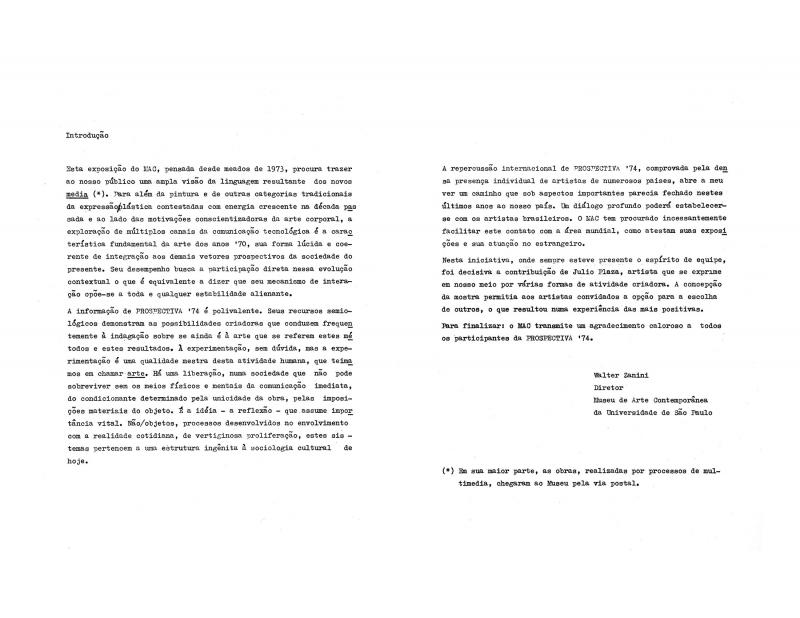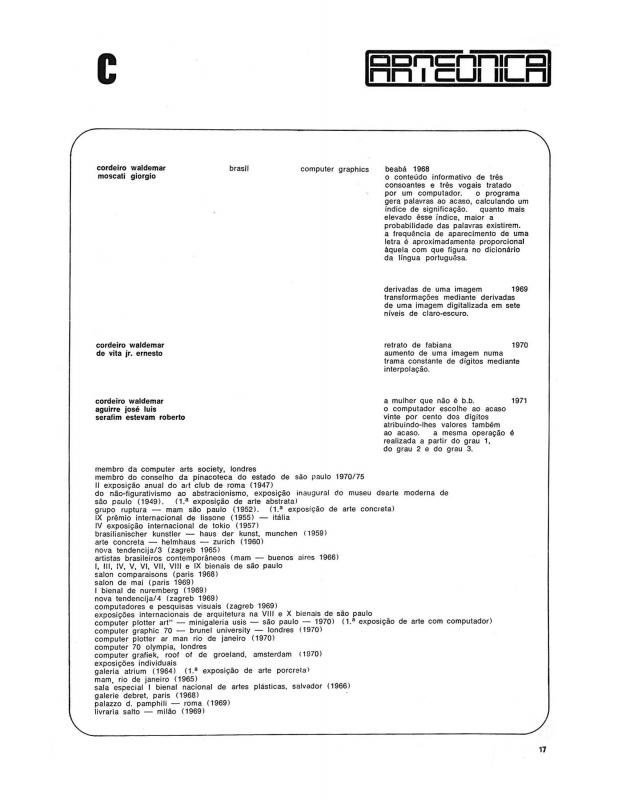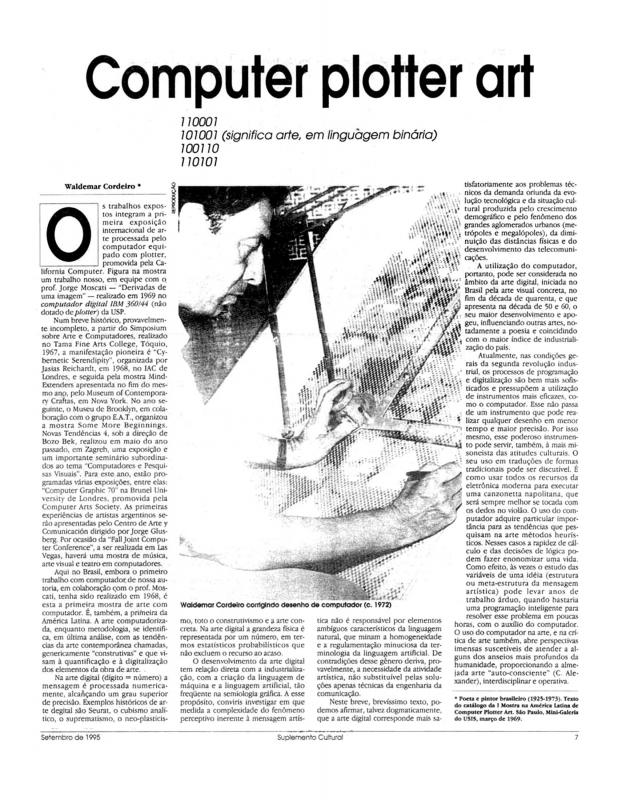Walter Zanini (1925−2013), the author of this text, was a critic, curator, and art historian. His work was twofold insofar as he was a theorist interested in the technological impact on art, and an active commentator who in his work as the director of a number of cultural institutions, attempted to support art that engaged technology and effected radical change. Zanini was the first director of the Museu de Arte Contemporânea (a part of the USP). From that post, which he held from 1963 to 1978, he encouraged the production of emerging artists and supported marginalized forms of artistic expression. He was also one of the curators of the first Bienal de São Paulo (1951). In conjunction with Julio Plaza (1938–2003)—an artist from Madrid who lived in Brazil and taught in the Departamento de Multimeios of the UNICamp and the Departamento de Artes Plásticas of the ECA-USP—Zanini organized major events in the seventies focused on communicating the work of artists engaged in experimentation and a conceptual use of multimedia. Due to its exhibitions and equipment, MAC-USP became a focal point for the first generation of Brazilian video artists. As a curator of the 1981 and 1983 Bienales de São Paulo, Zanini presented experimental works of video art, video text, slow-scan, and other media to the public.
For related texts, see Walter Zanini’s “Introdução a Prospectiva ‘74” [doc. no. 1110588] and “[Incontáveis artistas] = [Countless artists]” [doc. no. 1110891]; and Waldemar Cordeiro’s “Arteônica” [doc. no. 1110836] and “‘Computer Plotter Art’—Primeira Mostra na America Latina” [doc. no. 1110487].
For additional information, see Walter Zanini’s “A Arte de Comunicação Telemática” (1998): Agnus Valente (org.), HIBRIDA, Revista Eletrônica, www.agnusvalente.com/hibrida/walterzanini_texto_01.htm available as of February 2009; cf. Ars magazine, São Paulo, 1(2003), pp. 10–34.




